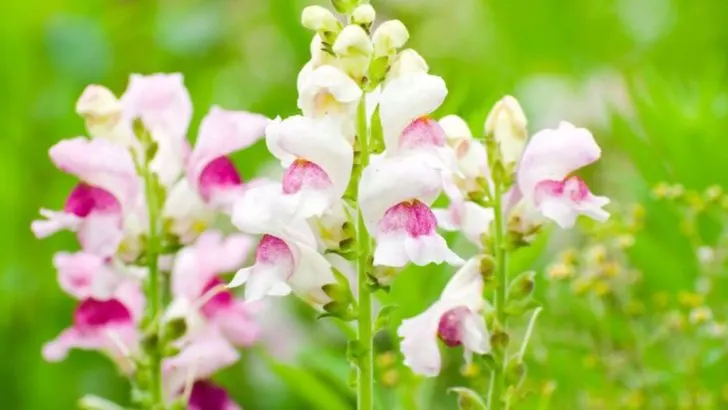Dahlias are stunning, long-blooming flowers that thrive with the right companions in the garden. Pairing them with the right plants can help deter pests, improve soil health, and create a visually striking landscape. Whether you’re growing dahlias for cut flowers or as a garden showpiece, here are nine plants that make excellent neighbors for these beautiful blooms.
Lavender
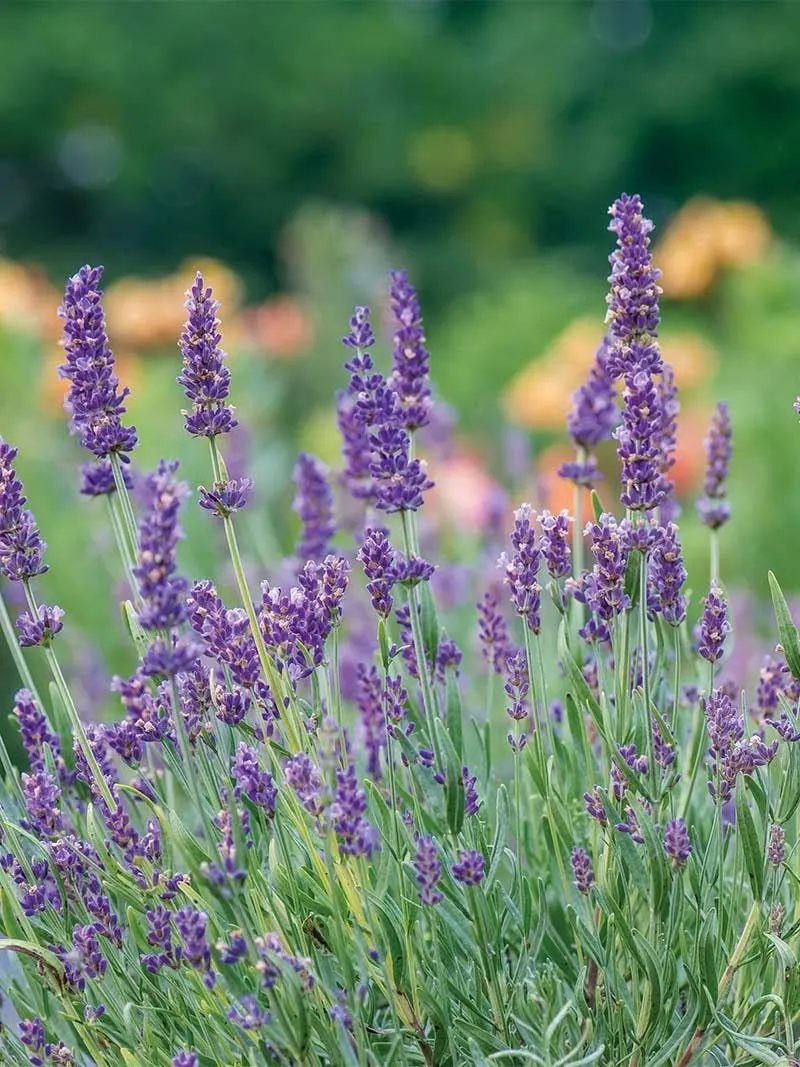
Lavender stands tall as a fragrant companion, offering a delightful scent that contrasts beautifully with dahlias. Its pest-repelling properties make it a practical choice, keeping unwanted insects at bay. The purple hues of lavender provide a striking visual contrast, enhancing the vibrant colors of dahlias. Furthermore, lavender’s drought-resistant nature ensures it thrives alongside thirstier dahlias, without competing for resources. Gardeners appreciate its low maintenance, requiring minimal attention once established. Lavender’s ability to attract pollinators like bees further benefits dahlias, promoting healthy flowering and growth.
Marigold
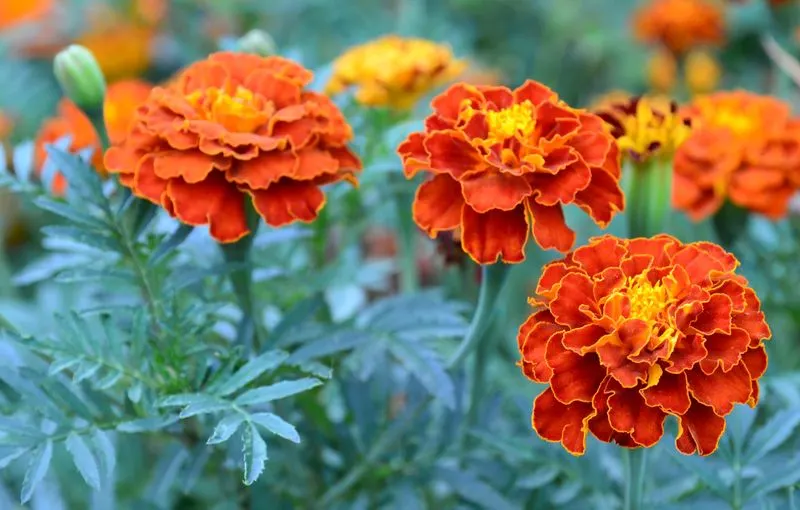
Marigolds bring a splash of sunshine to any garden, making them an ideal dahlia companion. Known for deterring nematodes and other pests, marigolds contribute to a healthier growing environment. The bold, cheerful colors of marigolds complement the rich hues of dahlias, creating a vibrant tableau. Their natural pest control benefits are a bonus, reducing the need for chemical interventions. Easy to grow, marigolds thrive in similar conditions as dahlias, making them a harmonious match. Their resilience ensures they bloom prolifically, enriching the garden with continuous color.
Zinnias
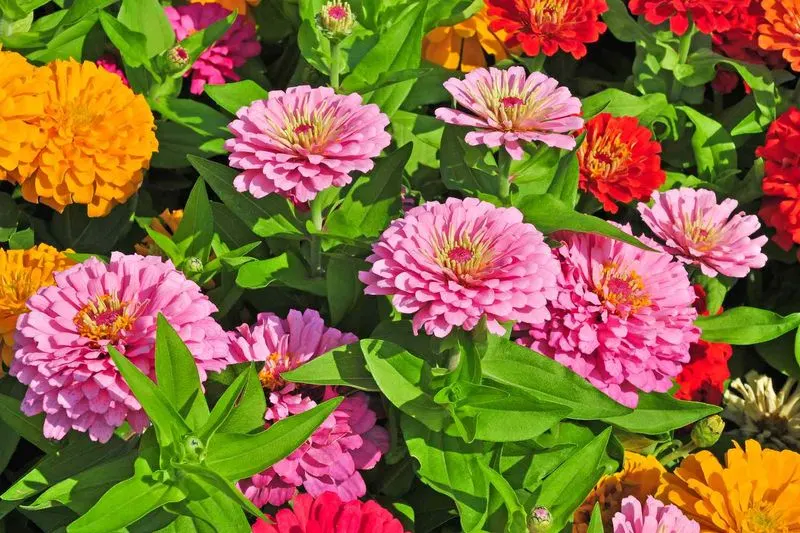
Zinnias are a delightful choice for pairing with dahlias, offering a spectrum of colors that mirror and enhance dahlia blooms. They share similar sunlight and soil preferences, ensuring a compatible growth partnership. Zinnias attract beneficial insects such as ladybugs and pollinators, which aid in maintaining a healthy garden ecosystem. With their long blooming season, zinnias provide continuous color that complements the dramatic flair of dahlias. Their low maintenance nature makes them a favorite among gardeners, effortlessly adding charm and vibrancy to the garden.
Cosmos
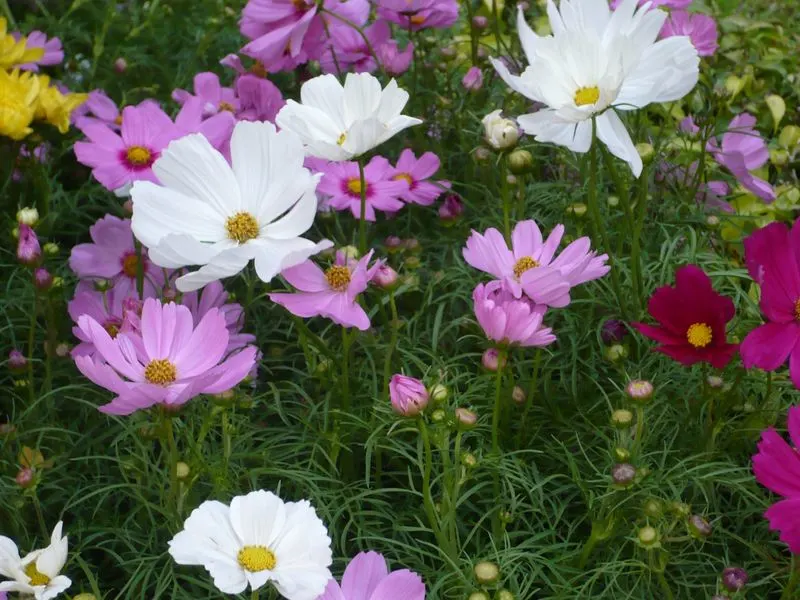
Cosmos exude an airy elegance, making them a lovely dahlia neighbor. Their delicate petals and tall stature add a touch of whimsy, contrasting the boldness of dahlias. Cosmos are known for attracting a variety of pollinators, enhancing the biodiversity of your garden. They thrive in similar conditions as dahlias, enjoying full sun and well-drained soil. Their long flowering period ensures a garden full of blooms, from midsummer through fall. Cosmos require little maintenance, making them an excellent choice for gardeners seeking beauty with minimal effort.
Ageratum
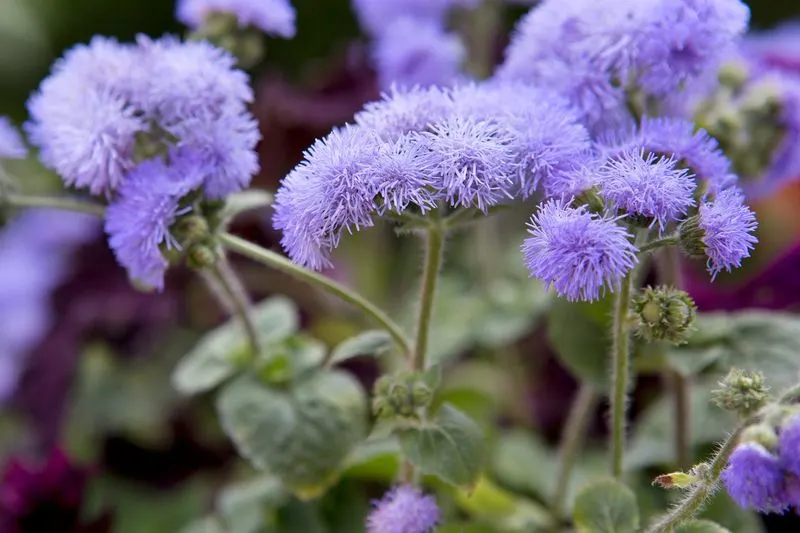
Ageratum, with its fluffy blue blooms, creates a serene backdrop for the vibrant dahlias. Its compact form and soft colors highlight the bold dahlia displays without overwhelming them. Ageratum attracts beneficial insects, aiding in natural pest control and promoting healthy plant growth. It thrives in sunny locations, making it an ideal companion for sun-loving dahlias. The ease of growing ageratum, coupled with its continuous flowering, ensures a garden that remains lively and colorful throughout the growing season. Its subtle beauty and utility make it a garden favorite.
Salvia
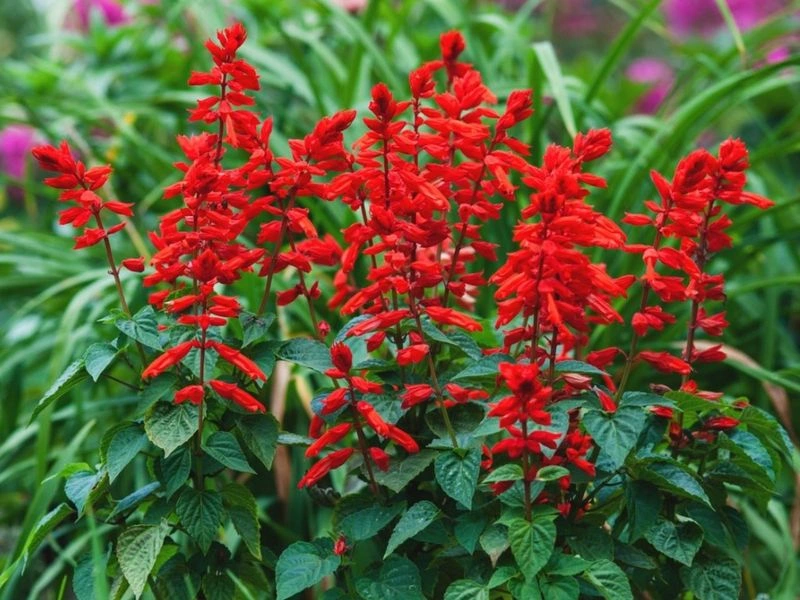
Salvia offers a striking visual contrast to dahlias with its tall, spiky blooms. This plant draws in beneficial pollinators like bees and hummingbirds, which are crucial for a thriving garden environment. Salvia’s drought tolerance complements dahlias, ensuring each plant can coexist without competing for water resources. Its long blooming period keeps the garden vibrant and colorful from spring through fall. The resilience and low maintenance of salvia make it a smart choice for gardeners looking to enhance their dahlia beds with both beauty and function.
Nasturtiums
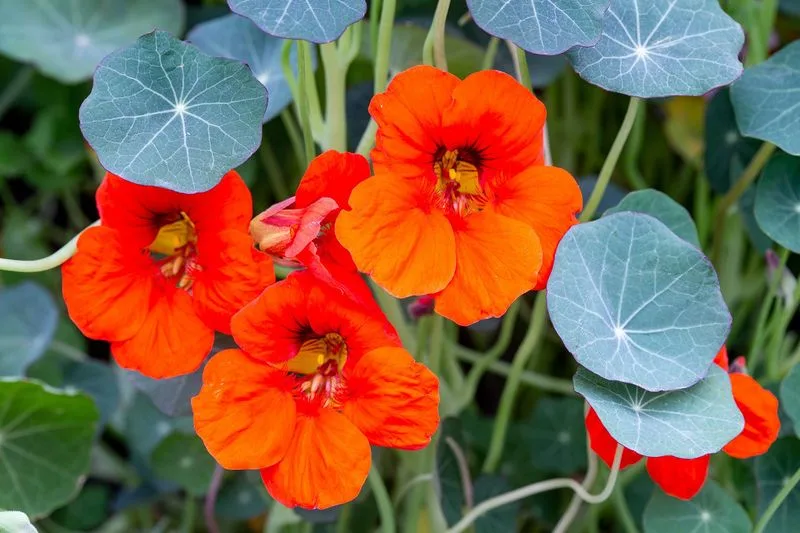
Nasturtiums are a lively addition to any dahlia garden, with their vibrant flowers and trailing habit. They act as a natural pest deterrent, drawing aphids away from other plants. The flowers and leaves of nasturtiums are edible, adding versatility to their garden appeal. Their bold colors create a striking contrast, highlighting the beauty of dahlias. Low maintenance and quick to grow, nasturtiums thrive in similar conditions, making them a compatible companion. Their ability to improve soil health by fixing nitrogen is an added benefit, promoting overall garden vitality.
Snapdragons
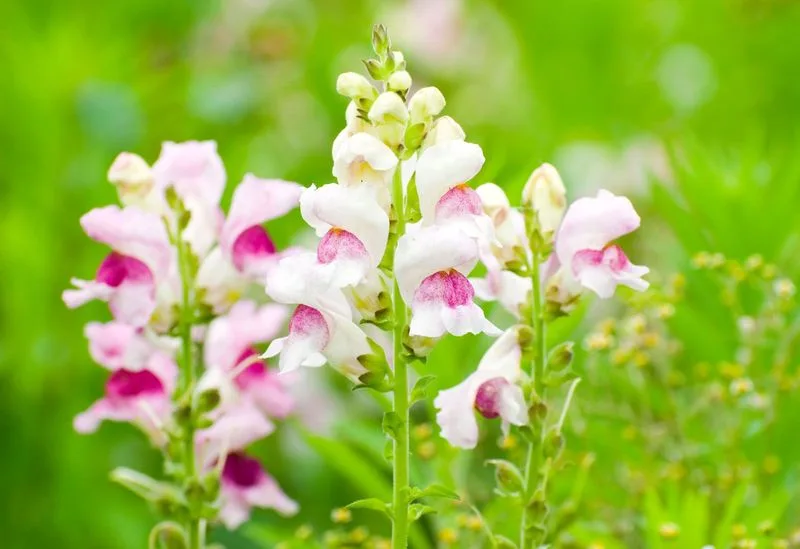
Snapdragons bring vertical interest and a touch of elegance to dahlia beds. Their tall spikes and diverse colors complement the broad petals of dahlias, creating a balanced visual appeal. Known to attract pollinators, snapdragons contribute to a dynamic garden ecosystem. They adapt well to similar growing conditions, thriving alongside dahlias in sunny, well-drained soils. With their long blooming season, snapdragons ensure continuous beauty throughout the growing months. Their ease of care and vibrant hues make them a beloved choice for enhancing the charm and diversity of flower gardens.
Basil
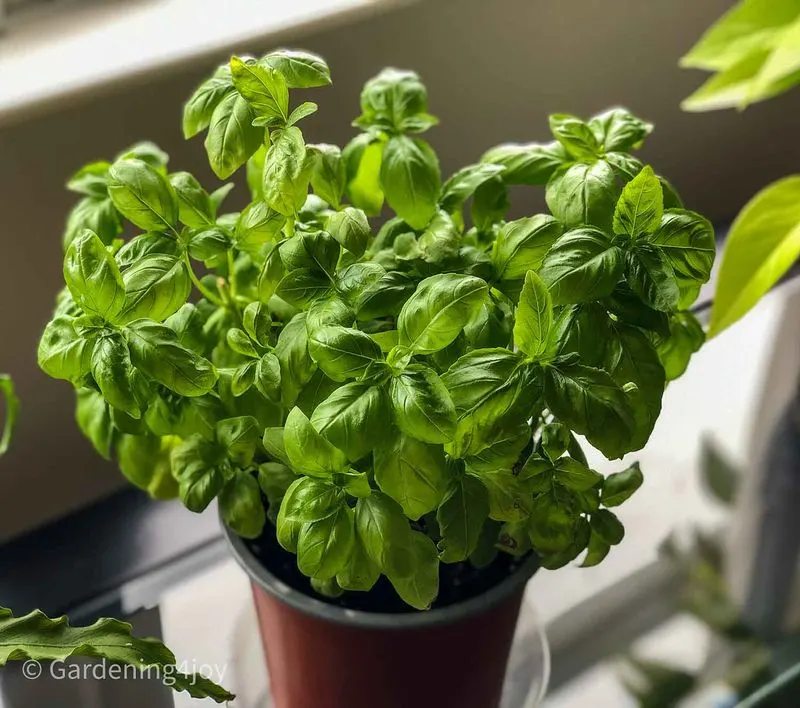
Basil brings a culinary twist to the ornamental dahlia bed. Its aromatic leaves not only enhance the garden’s fragrance but also repel harmful insects, offering natural pest protection. The green foliage of basil provides a fresh backdrop, making the dahlia colors pop. Gardeners enjoy the dual benefits of harvesting fresh basil for cooking while enjoying the aesthetic appeal it adds to the garden. Its compatibility with the growing conditions of dahlias makes basil a practical and enjoyable companion, adding both flavor and function to the garden space.

